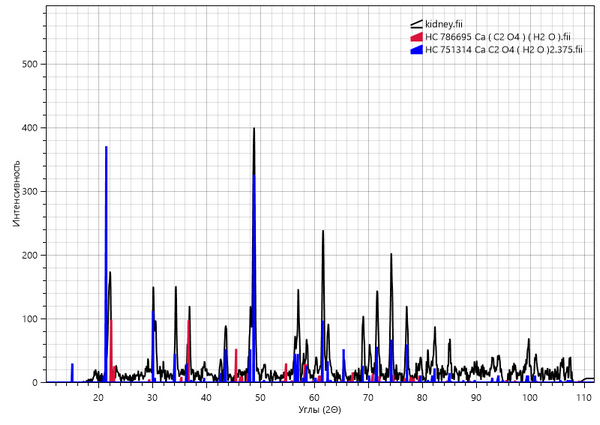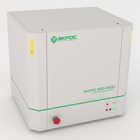Спасибо, что помогаете стать нам лучше 
X-ray phase analysis in the study of kidney stone.
Report on X-ray phase analysis of a kidney stone sample
The sample was taken on an ECROS XRD-9500 diffractometer with a position-sensitive detector with a simultaneous detection range of 43°. We used a tube with a Cr anode (λ = 2.29Å), voltage 25 kV, current 7 mA. The shooting was carried out at the positions of the tube and detector 10 - 25, 25 - 25, 40 - 40 degrees, the final range was 2θ = 18 - 108°. The sample was first ground in a mortar and pressed into a cuvette. The identification of crystalline phases was carried out in the ECROS Search program using the built-in powder base.
Measurement results
According to the results of changes and processing of the X-ray diffraction pattern (Fig. 1), the studied sample consists of calcium oxalates - monohydrate (wewellite, CaC2O4*H2O) and dihydrate (weddellite, CaC2O4*2H2O). These phases are typical for kidney stones.
Information about the phase composition of kidney stones can be used to determine the causes of the disease (urolithiasis) and prescribe the most effective treatment (drugs, dietary adjustments, etc.) In addition, it is possible to study the effect of various drugs on different phases of kidney stones and inhibit or prevent their formation.
Pic. 1. Radiograph of a kidney stone sample showing wavellite and weddellite phase peaks.



